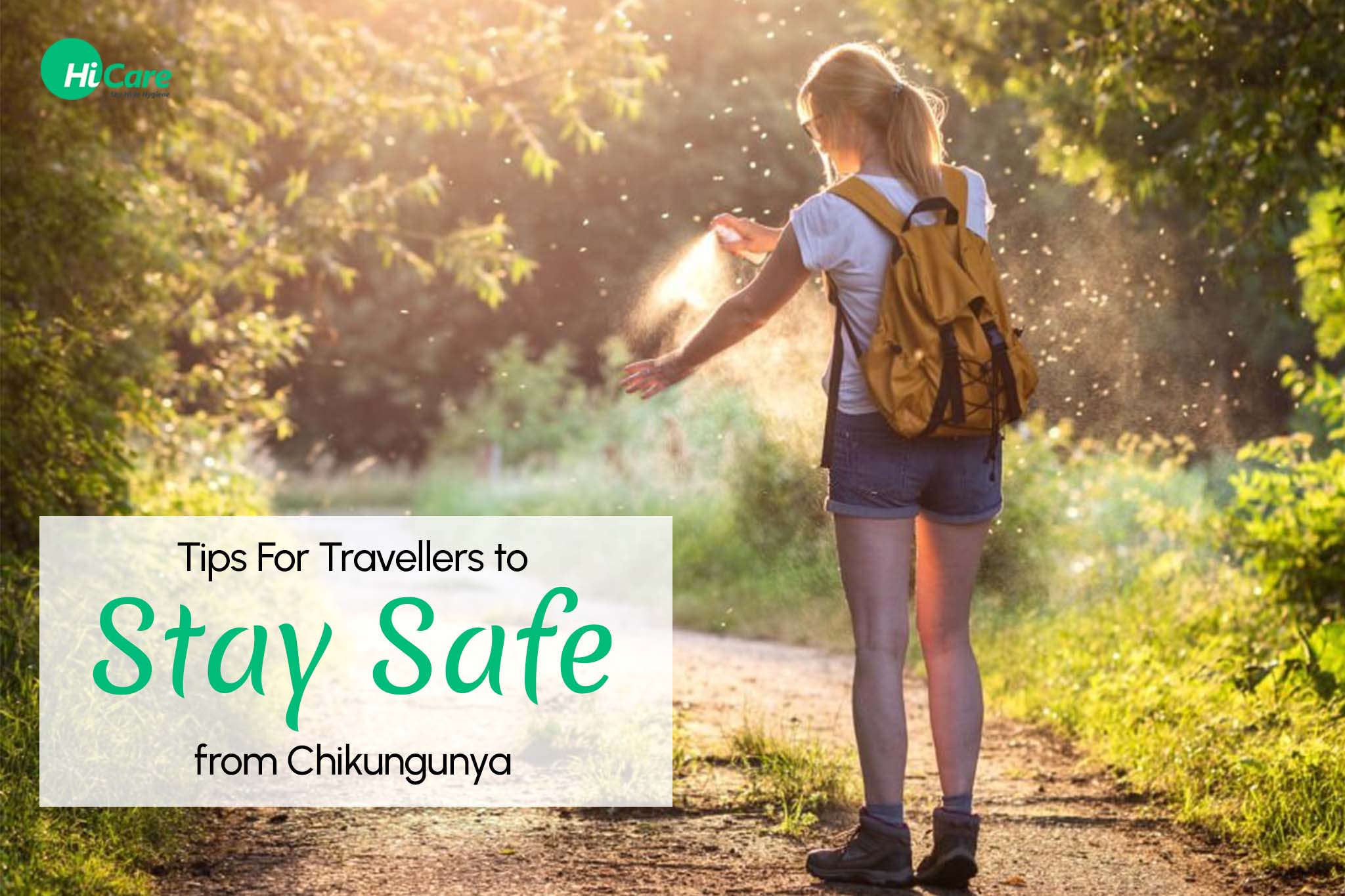Mosquitoes spread many types of viruses and parasites that cause diseases like Chikungunya, Dengue, Malaria, and Zika. You may ask your doctor about chikungunya virus and malaria prevention medicine. But must take care to avoid mosquito bites to stay safe from infection while travelling.

Infected mosquitoes transmit the Chikungunya virus to humans by, which have bitten a person carrying the Chikungunya virus. They often cause large outbreaks or epidemics in mosquito-infested areas. Chikungunya originated in East Africa, but outbreaks frequently occur in Africa, Asia and India as well as Pacific Ocean regions. Chikungunya was first identified in Africa in 1952 but caused large outbreaks in India during the 1960s and 1970s.
How does Chikungunya spread?
Chikungunya is one of the numerous viruses spread by the mosquito Aedes aegypti. When a female mosquito bites an infected human, the virus is transmitted. The Chikungunya virus is spread between people by mosquitos. When a naive (uninfected) mosquito feeds on the blood of a viremic person (one who has the virus circulating in their blood), the mosquito can pick up the virus.
When the mosquito feeds again, the virus goes through a period of replication in the mosquito, after which it can be transmitted to a new, naive host. In this newly infected person, the virus begins to reproduce and amplify to high levels.
If a mosquito feeds on them while the virus is circulating in their blood, the mosquito can pick up the virus, restarting the transmission cycle. When a person is viremic during the first week of illness, the risk of transferring the chikungunya virus to a biting mosquito or through blood is highest.
Discovery of Chikungunya
Chikungunya virus was initially discovered in Tanzania in 1952 and was isolated for the next 50 years, causing outbreaks across Africa and Asia. Chikungunya has spread fast since 2004, with cases reported in over 60 countries across Asia, Africa, Europe, and the Americas.
An outbreak in Kenya began in 2004 and quickly expanded to other parts of the Indian Ocean. Around 500 000 cases were documented in the two years that followed; on La Reunion Island, more than a third of the population was afflicted. The epidemic subsequently traveled across the Indian Ocean to India, where it lasted several years and infected nearly 1.5 million people. The virus spread to Indonesia, the Maldives, Sri Lanka, Myanmar, and Thailand thanks to infected travelers.
Characteristics of the Disease (Signs and Symptoms)
The beginning of sickness usually comes 4-8 days after being bitten by an infected mosquito (but can vary from 2-12 days). Chikungunya is marked by symptoms such as fever, which is commonly followed by joint pain. Joint pain can be incredibly painful; it normally lasts several days, but it can last weeks, months, or even years. As a result, the virus has the ability to cause acute, mild, or chronic illness. Muscle soreness, joint swelling, headache, nausea, exhaustion, and rash are all frequent indications and symptoms.
Infected people normally have moderate symptoms, and the illness can go undetected or be misdiagnosed. Chikungunya can have symptoms that are similar to those of other plant viruses; in locations where there is a lot of co-circulation, chikungunya is sometimes mistaken for dengue fever. Chikungunya, unlike dengue fever, seldom advances to a life-threatening stage.
The majority of people recover completely from the illness, but joint pain can last for months or even years in some situations. Individuals who have recovered are likely to be immune to future infections. To protect yourself and your family when traveling in various ways, learn how to avoid mosquitoes.
6 Tips to Avoid Mosquitoes while Travelling
- The most effective method is to keep mosquitoes at bay. Choose a hotel with mosquito screens or, at the very least, an air-conditioned room. If the room does not have appropriate screening, request a mosquito net.
- Long-sleeved, completely covered clothing is recommended. Because mosquitoes can bite through thin clothing, avoid wearing it. Some clothing has been treated to repel mosquitos and is thus considered safe.
- At all times, carry/use a DEET-certified repellent. Some people prefer citronella, cedar, geranium, or eucalyptus oil, although these oils offer less protection and wear off more quickly.
- Use repellents and read the instructions before using them, but do not use them on children under the age of six months.
- To avoid ingestion of the repellent, thoroughly wash your hands after each application.
- Permethrin-treated clothing and equipment (such as boots, pants, socks, and tents). You can treat your own clothing and gear or buy permethrin-treated clothing and equipment.
Call the HiCare experts
There is no commercial product vaccination to protect against the chikungunya virus. While multiple vaccine techniques are being pursued, some of which are in various stages of clinical trials3, they are still years away from being licensed and available to the general public. The best prevention against infection is to avoid mosquito bites.
Don’t let this extent arrive, the moment you spot a mosquito call the professionals to get rid of it. Prevention of Chikungunya is vital and taking the right measures. Any kind of risk can cause future harm. HiCare is India’s leading digital and responsible pest control services. We use safe chemicals and products to help you get rid of mosquitoes.
The technicians also offer free advice on how to stop mosquito breeding. They are extremely professional and patient in helping you with all queries. Don’t wait to spot more mosquitoes and contact HiCare directly for their effective 3X Mosquito Control Treatment. Our mosquito pest control is both safe and efficient to keep you happy and healthy.




